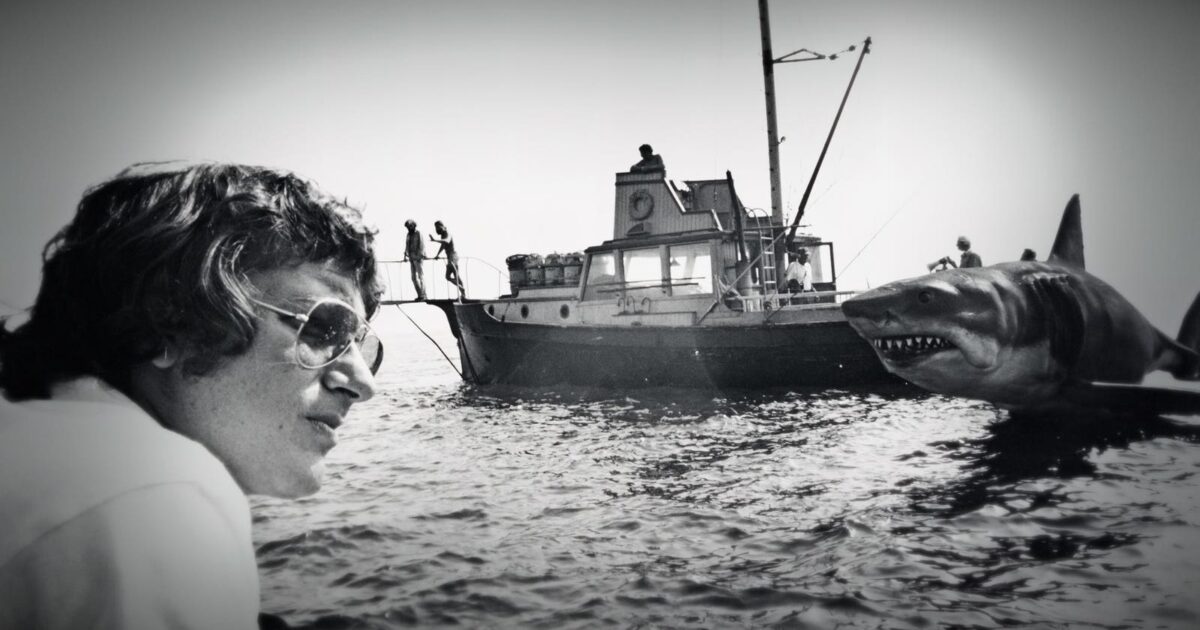How ‘Jaws’ Redefined Movie Tech And Ocean Awareness

Director Steven Spielberg on the set of Jaws with the mechanical shark in the background.
“Jaws” is one of the most iconic and instantly recognizable movies ever made. When it premiered in 1975, it didn’t just terrify audiences—it reshaped filmmaking technology and introduced groundbreaking techniques that changed cinema forever.
National Geographic’s new documentary, Jaws @ 50: The Definitive Inside Story, provides a fascinating look into the tools, tech, and improvisation that helped a young Steven Spielberg turn catastrophe into cinematic innovation.
Directed by Laurent Bouzereau and produced by Amblin Documentaries in partnership with Wendy Benchley, the documentary offers an unfiltered view into how Spielberg navigated major technical hurdles. I spoke with Benchley about the documentary and the legacy of the movie.
Most famously, the mechanical shark—nicknamed “Bruce”—failed so often it became a liability. Spielberg adapted by filming from the shark’s point of view, a now-iconic approach that turned absence into tension. “The genius of Steven,” Benchley notes, “was knowing when to show less and let the audience imagine more.”
Tech Trouble at Sea
The film also revisits lesser-known tech struggles, like camera malfunctions from saltwater exposure and the logistical nightmare of ocean shooting. These details underscore a core point: innovation doesn’t always start with new technology. Sometimes, it starts with failing technology and a director who’s willing to think differently.
From Fear to Fascination
Incorporating never-before-seen footage from Spielberg’s and the Benchley family’s archives, the documentary also unpacks the unintended impact of the film on marine life. “We were horrified that some people took ‘Jaws’ as a license to kill sharks,” Wendy Benchley recalls. “We determined then and there to learn about sharks ourselves and fight for their protection.”
Turning Data into Defense
Benchley has since become a global advocate for ocean conservation, helping to drive tech-enabled approaches to protect marine ecosystems. “We can now track illegal fishing vessels using satellite data, and follow shark migration patterns online in real time,” she explains. “Technology has been a game-changer for ocean advocacy.”
A Legacy of Curiosity
That transformation—from shark villain to shark protector—is one of the most compelling narratives in the documentary. Benchley says the legacy of Jaws includes a 30% spike in marine science enrollment at universities shortly after the film’s release. “Peter got thousands of letters from young people who wanted to be the next Matt Hooper,” she says. “That fascination led to real science.”
“Jaws @ 50” premiers on National Geographic on July 10.
Creative Impact, Then and Now
The documentary also showcases modern filmmakers—including J.J. Abrams, Jordan Peele, and James Cameron—explaining how Jaws shaped their creative process and technical approach. Their reflections show how Spielberg’s improvisation set a new benchmark for cinematic problem-solving.
Final Cut
Fifty years later, Jaws @ 50 reframes a pop culture milestone as a masterclass in creative adaptation. It’s a reminder that great storytelling isn’t about having the best tools. It’s about knowing what to do when those tools break—and turning that breakdown into something unforgettable.

